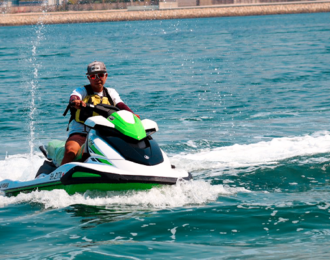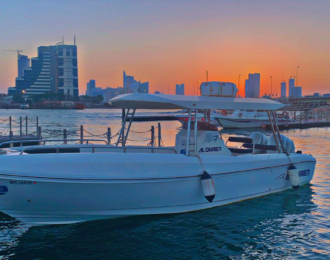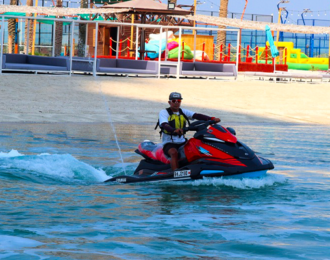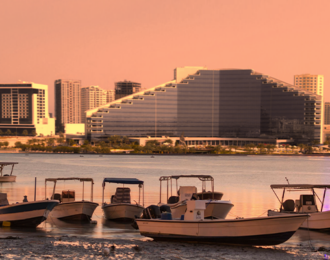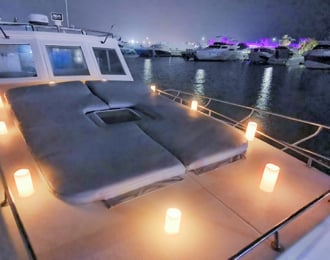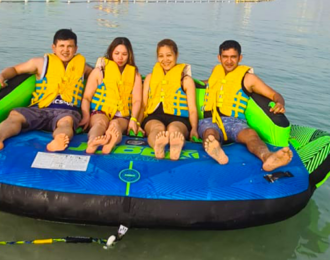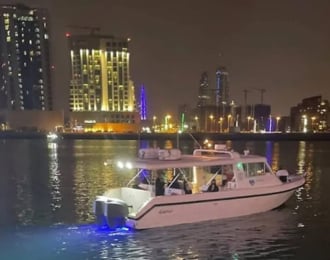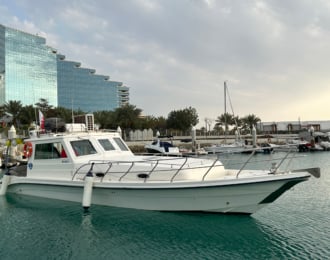Nature and wildlife in Bahrain
Nature and Wildlife in Bahrain are one of the most important elements that provide environmental balance and play an important role in human progress, as it provides new and different genes for scientists to help scientists discover modern animal breeding methods that keep them from the possibility of extinction. And others.
Scientists have confirmed that there are about 16,000 species of wildlife threatened with disruption, and it has been proven that 820 species have been extinct in the past decade due to human activity.
What to do in Nature and Wildlife in Bahrain
The wildlife offers a diversity of activities that anyone can enjoy. In Bahrain, you can have fun while having a tour of camel or horse riding. Also, riding a quad bike is one of the most spontaneous experiences.
Nature Reserves in Bahrain
Marine reserves
Hayr Bulthama Reserve
The 7.8 square kilometre Hayr Bulthama Reserve is situated 70 km north of Muharraq. Hayr Bulthama's average depth is 12 metres, which is shallower than that of its surrounding locations. That is, however, comparatively deeper than Bahrain's territorial waters, which have a maximum depth of 69 metres. In 2008, Hayr Bulthama was designated as a protected marine area.
Arad Bay Reserve
One of the most significant mangrove reserves along the coast in the Kingdom of Bahrain is Arad Bay. The deliberate planting of the mangrove trees aims to improve soil cohesiveness and offer little fish a secure habitat. The largest public walkway in the Kingdom of Bahrain is located in the park. The walkway offers an excellent chance to practice walking in a picturesque setting.
Tubli Bay Reserve
Northeastern Bahrain Island is home to Tubli Bay. Roughly 15.91 km2 are covered. With calm currents and a relatively low salinity, Tubli Bay is a semi-confined bay. Many different types of marine and coastal habitats can be found in the area. There are about 45 different species of sea birds that live and migrate through this low-energy, sheltered region, which is characterised by high primary production mudflat distribution.
Mashtan Island Reserve
Mashtan Island is roughly 2.5 square kilometres in size and is situated north of Hawar Island and east of Bahrain Island. The Kingdom of Bahrain's biodiversity depends on Mashtan Island and its environs since they are home to numerous significant marine plants, of which seven distinct species have been recognised. In addition, the island is home to a variety of marine life and wild plants that can withstand salt, which is regarded as a component of the kingdom's natural vegetation history.
Wild Reserves
Al Areen Reserve
Al Areen is divided into two halves. The first is a 4 square kilometre region in the Kingdom of Bahrain devoted to conserving the desert environment's biodiversity. Except for experts, researchers, veterinarians, and animal caretakers, there is restricted access to this natural reserve. The park, which makes up the second part, is three square kilometres in size and is primarily focused on the preservation and proliferation of Arabian wildlife, especially birds. Both group and solitary park visits are permitted when accompanied by certified guides.
Hawar Islands Reserve
Due to their geographic isolation and disparate elevations, the Hawar Islands have drawn a wide variety of bird species that nest and live in different seasons. This is true—the greatest colony of Socotra cormorant birds, known locally as "Allooh," is found on the islands; on South Suwad Island, there are currently roughly 25,000 of these birds. Research shows that the Socotra cormorant birds on the island account for 20–25% of their global population, demonstrating the significance of these islands on a global scale.
Other unusual birds that inhabit the islands include the fish eagle, or osprey, which soars to great heights, and the endangered falcon concolor, which seeks sanctuary in the Hawar Islands to breed. The greatest dugong aggregation in the world is found in the territorial seas surrounding it.
Wild Animals in Bahrain
In Bahrain, there are very few wild animals, so they take great care to preserve them. One of the five most important nature reserves in Bahrain is Al Areen Reserve, the best Bahrain zoo which includes about 100,000 species of cultivated plants, more than 90 types of different birds and 50 types of threatened animals Extinct. Prisoners have extinct species including the wild Arabian oryx, Persian gazelle, donkey chapmen, rare addaxes and many other exotic birds.
The nature and bahrain wildlife are distinguished by their diversity in their characteristics, fauna and flora. Let's mention some of these beautiful creatures.
Desert Fox ( Fennec Fox)
The fox, or as it is called (al-Fennec), is one of the wild animals in Bahrain that lives in the desert and prefers night to day, it has a large ear that dissipates heat because it is one of the animals that live at a low temperature, and it is also distinguished by its good sense of hearing as it can hear the sound of prey moving underground. Foxes like to hunt mammals, birds and insects.
Desert Hare
The desert hare is fast-moving and small in size, the colour of its head is sandy to escape from predatory animals, so this type of rabbit prefers to appear at night and throughout the day it hides under the bushes and does not appear not to eat.
Jerboa
Jerboa is a hopping desert rodent. They have excellent hearing so they can hear the predators that are looking for them. They can run more than 20 kilometres per hour.
Sand Cat
This type of cat prefers to live in the desert and is called a sand cat because they have hair in its ears, and its four-leg palms prevent sand from escaping, which gives him shades of sand. Sand cats do not need to drink much water because they get all their needs from their prey, which are reptiles and mammals.
Golden Jackal
The golden jackals look like wolves. They live in dens and huts at night. Jackals hunt small mammals, birds and reptiles. They usually hunt at dawn or dusk.
Camels
Camels are among the most popular pets in Bahrain desert animals, and they are camels that have a single hump, so they are known as dromedaries. The benefit of camels is not only to transport people and goods, it is treated as a kind means of transportation, but camels also provide meat, milk, hair, and the most beneficial types of meat and milk.
Arabian oryx
The Arabian Oryx is one of the endangered Bahrain animals and the best mammals that can endure desert life and one of Bahrain zoo animals. Among its characteristics is living in a very dry, hot and windy climate. The Arabian Oryx lives in dunes, stony plains, and valleys. The Arabian Oryx feeds on moist herbs, which are best consumed at night.
The reasons for the extinction of nature and wildlife in Bahrain
Unfortunately, humans deal with Bahrain animals in an unfriendly way to attract their attention. Some children also deal with animals in a harmful way, such as by throwing stones at them and throwing food, thinking that they win the love of the animals. But the media and the people play an important role in raising awareness about the importance of preserving nature and wildlife in Bahrain and teaching children and adults the correct ways to deal with the animals to prevent their extinction and preserving these friendly creatures that provide us with happiness and entertainment.
We need awareness campaigns to make people feel the importance of animals and that we live in an interconnected circle and an integrated ecosystem, so we must preserve them and understand that these animals are creatures like us and have rights like us. The simplest of these rights is to live in peace with humans.





























































